A weekend in Athens: top 7 tips
Although I’ve never lived in Athens, I’ve always enjoyed visiting the Greek capital, usually for a weekend break. Known as the cradle of the Western civilization and the birthplace of democracy, Athens (or Athina, in Greek) has a rich and diverse history spanning over three thousand years. Nowadays, Athens is the largest city in Greece, and is home to more than three million people.
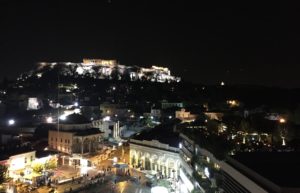
Here are my top 7 tips for a weekend (or a couple of days) in Athens:
Tip 1: Visit the Acropolis and the Acropolis Museum
If there was only one image associated with Athens, that would definitely be the Parthenon, the iconic ancient temple on the top of the Acropolis. It was constructed during the 5th century BC, when the Athenian Empire was at its peak and Athens was the greatest cultural center of its time. Regarded as the epitome of Greek architecture, the Parthenon was dedicated to Athena and housed the chryselephantine statue of the ancient Greek goddess, now lost. The 92 Doric metopes on the frieze above the exterior colonnade and the Ionic frieze running around the exterior of the cella walls were decorated with marble sculptures, depicting mythological figures. Some have been damaged or destroyed, some remain on the building, and some are located at the Acropolis Museum, at the British Museum in London or at the Louvre in Paris.
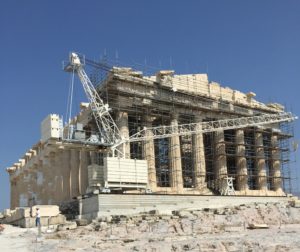
The Acropolis is one of the two UNESCO World Heritage Sites in modern-day Athens; the other one is the Daphni Monastery, an 11th-century Byzantine monastery, located 11 km northwest of central Athens in the suburb of Haidari. Other than the Parthenon, the Acropolis also contains the remains of several other ancient buildings, such as the Propylaea (the monumental gateway to the Acropolis), the Erechtheion (a temple dedicated to Athena and Poseidon), and the Temple of Athena Nike (another temple dedicated to Athena).
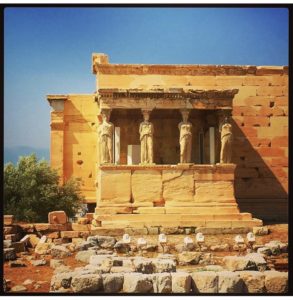
Findings from the archaeological site of the Acropolis are housed in the Acropolis Museum, which opened to the public 11 years ago. It is built over an archaeological site, located by the southeastern slope of the Acropolis, and is certainly worth a visit alongside the Acropolis itself. The museum cafe offers a great view of the Acropolis and the Parthenon.
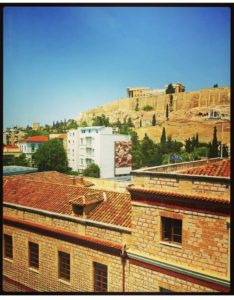
Tip 2: A walk around the Acropolis of Athens
The neighborhoods and districts around the Acropolis of Athens are my favorite part of the city. I particularly enjoy getting lost in the labyrinthine streets in Plaka, a historical neighborhood on the northern and eastern slopes of the Acropolis, between Syntagma (the central square of the city) and Monastiraki Square. Plaka is full of neoclassical townhouses and some fantastic places to eat and drink (see below). Anafiotika is a tiny neighborhood, part of Plaka, with characteristic architecture reminiscent of Cycladic islands. It has actually been named after Anafi, a small island in the Cyclades.
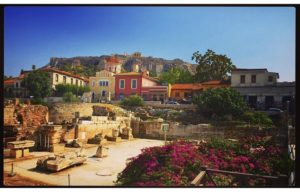
Southeast of the Acropolis, not far from the Acropolis Museum, there are the Columns of the Olympian Zeus and the Arch of Hadrian. The Columns are what remains today of the Temple of Olympian Zeus, an ancient temple dedicated to the god Zeus. The Arch is a monumental gateway built in the 2nd century AD to honor the Roman Emperor Hadrian.
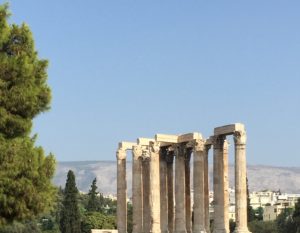
The neighborhoods Monastiraki, Psyrri and Thision, are also among my favorite ones, and are within walking distance from each other and from Plaka. Monastiraki is famous for its flea market, whereas Thision, named after the mythical hero-founder of the city, is scattered with some of my favorite cafes, restaurants and bars. The Temple of Hephaestus, constructed in the 5th century BC, and the Thision Open Air Cinema are also located there.
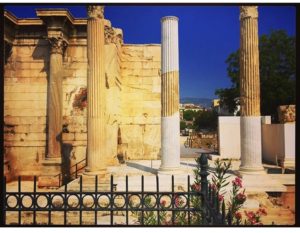
Tip 3: Watch a performance at the Odeon of Herodes Atticus
The Odeon of Herodes Atticus (also known as Herodion) is an open-air Roman theater located on the southwest slope of the Acropolis. Nowadays, together with the Ancient Theatre of Epidaurus (in Peloponnese), it is the main venue of the Athens & Epidaurus Festival. The festival takes place from May until October and features musical, theatrical and dance performances. Over the last 65 years, a variety of Greek and international artists have performed at the Odeon of Herodes Atticus, including Maria Callas, Frank Sinatra, Nana Mouskouri, Mikis Theodorakis, Manos Hatzidakis, Luciano Pavarotti, Plácido Domingo, José Carreras, and Andrea Bocelli.
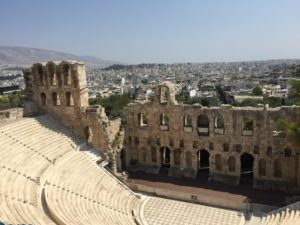
Tip 4: Watch a film at the Thision Open Air Cinema
Built in 1935, the Thision Open Air Cinema is one of the oldest in the city. It is open from the spring, throughout the summer, until the autumn, and shows contemporary and classic films (with Greek subtitles) against a unique backdrop: the Acropolis of Athens.
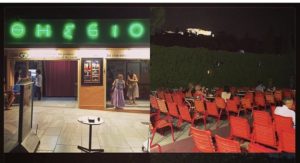
Tip 5: Visit the National Archaeological Museum
The National Archaeological Museum is considered not only one of the greatest museums in Athens and in Greece, but also in the world. Amongst the exhibits, there are findings from a variety of archaeological locations around Greece dating from prehistory to late antiquity.
One of the highlights of the museum is the so-called Antikythera mechanism, named after the island where it was found in 1901 (it was actually found in the wreckage retrieved from a shipwreck off the coast of the small island). It is an ancient Greek device, used to predict astronomical positions and eclipses for calendar purposes. It is basically the oldest computer in the world.
Afterwards, walk around the alternative district of Exarhia, before you continue to the posh neighborhood of Kolonaki and the Museum of Cycladic Art.
Tip 6: Visit the Museum of Cycladic Art
From the National Archaeological Museum and the alternative district of Exarhia, you can walk towards Kolonaki, where the Museum of Cycladic Art is located (the walk takes about half an hour).
I would strongly recommend walking on Akadimias Str.; exactly halfway through your walk (about a 15-minute walk from the National Archaeological Museum), you will come across the so-called ‘architectural trilogy of Athens’; this consists of three 19th-century neoclassical buildings housing the National Library of Greece, the National and Kapodistrian University of Athens Central Building, and the Academy of Athens.
Afterwards, continue towards Kolonaki and the Museum of Cycladic Art (it will take you another 15 minutes). The museum houses a permanent privately owned collection of ancient Cycladic art; it also features temporary exhibitions of Greek and international artists (i.e. Salvador Dali, Caravaggio, and El Greco).
Before you leave the Museum of Cycladic Art, it is worth visiting the cafe of the museum, an oasis in the center of the Greek capital. Afterwards, walk around the posh neighborhood of Kolonaki.
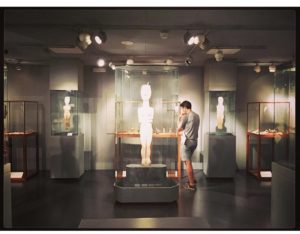
Tip 7: Where to eat and drink in Central Athens
In a city as large as Athens, there are of course hundreds of choices; here are some of my favorite cafes, restaurants and bars in Central Athens (alongside the museum cafes I’ve already mentioned).
Let’s start our day with a coffee in Plaka. Klepsydra (9, Thrasyvoulou Str. & Klepsydras Str.) is especially charming.
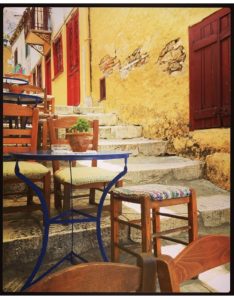
Adrianou Street, extending from Thision to Plaka, is one of the main streets in Plaka, as well as one of my favorites. The Thision end is lined with many cafes and restaurants, of which MOMA (29, Adrianou Str.) is my favorite.
For lunch, I would head to Scholarhio (14, Tripodon Str.) for traditional Greek mezedes, or to Oineas (9, Esopou Str.), one of the many restaurants in Psyrri, good for lunch or dinner.
In the evening, I would visit one of the rooftop bars for a cocktail or two against the best possible backdrop: the Parthenon and the Acropolis of Athens. Couleur Locale (3, Normanou Str.) and A for Athens Cocktail Bar (Miaouli 2) are both great options.
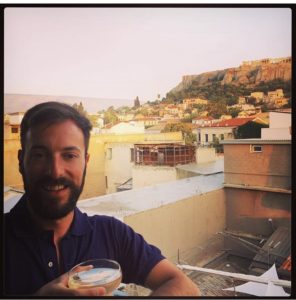
Two of the world’s best 50 bars are in Athens; The Clumsies (30, Praxitelous Str.) currently ranks at the 6th place, whereas Baba Au Rum (6, Klitiou Str.) ranks at the 31st.
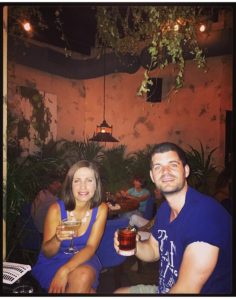
For a late-night snack (a.k.a. souvlaki – meat grilled on a skewer, and served in pita bread) and a taste of Greek street-food, Tylihto (19, Aiolou Str.) is the place to be.
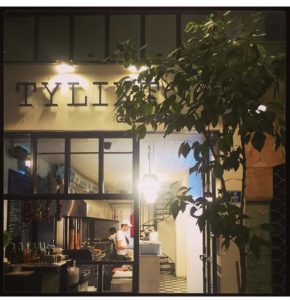
Practical information
How to get to Athens
Athens is served by the Athens International Airport, which is the largest in the country. From the airport, it takes a little over half an hour to get to the city center by metro.
The port of Piraeus is the largest in Greece, and one of the largest passenger ports in the world. In the summer, there are daily ferries to most islands in the Aegean. For example, the Cycladic island of Serifos is only 2 hours away on the ferry. From the port of Piraeus, it takes about half an hour to get to Central Athens by metro.
When and how long to visit Athens
Mid and late spring, as well as autumn, are probably the best times to visit Athens, as the weather is mild, not as hot as during the summer months, and not as cold as in the winter.
If, however, you want to combine your holidays on the Greek islands with a few days in Athens, then make sure you do so in the summer, as this is the best time to visit the Greek islands.
A couple of days may be enough to visit the main places of cultural and historical interest in Central Athens, but it goes without saying that the more you stay the more you will see and do.
Accommodation in Athens
I would strongly recommend staying in Central Athens, as this is the most interesting part of the city. Try to find accommodation within or near the neighborhoods and districts mentioned above, but avoid staying too close to Omonoia Square, as this is quite a dodgy area of the city.
Alex
(the Traveling-again-Psychiatrist)